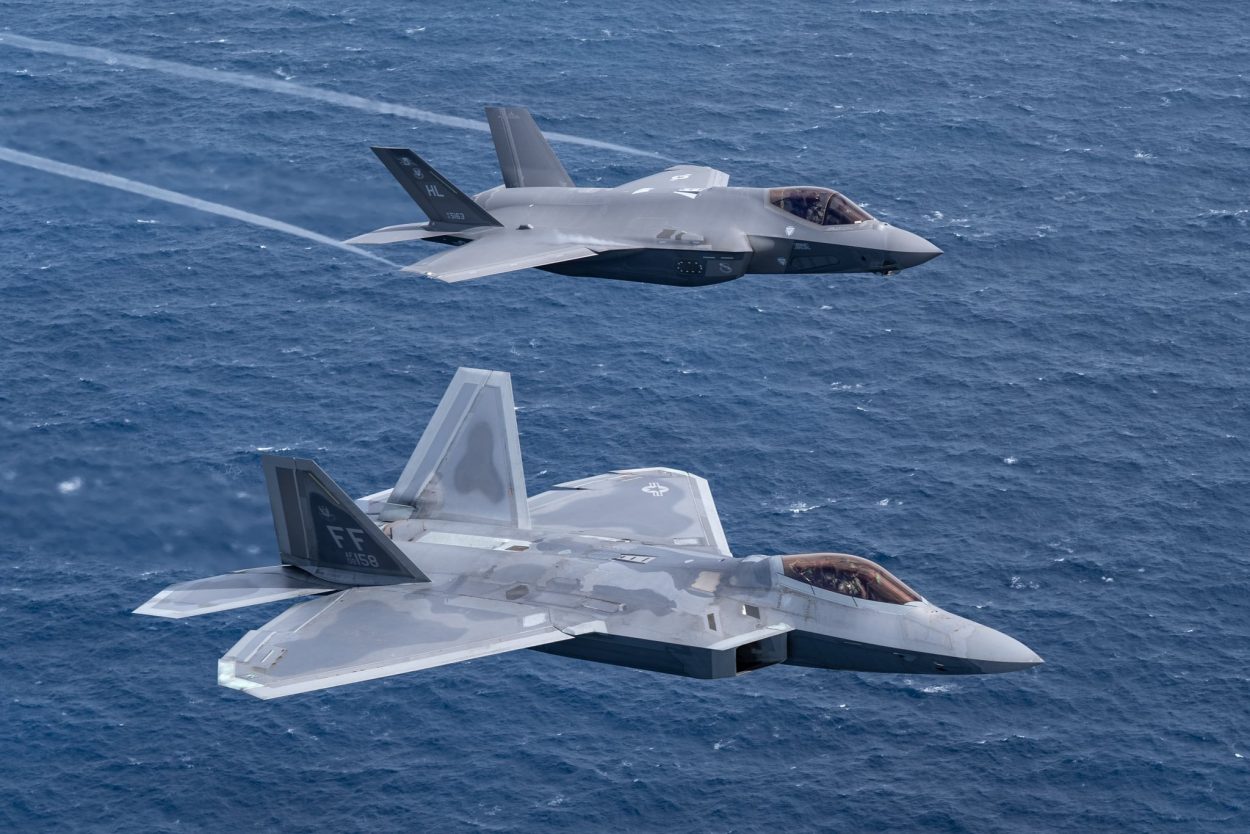The Lockheed Martin F-22 Raptor is one of the deadliest fighter jets ever built. Its superior maneuvering and dogfighting capabilities are simply awe-inspiring. Yet, despite being the epitome of strength, the Raptor’s production was terminated quite early by the US.
Why Is India Upgrading Its Air Force With Older MiG-29, Mirage 2000 Fighter Jets As It Looks To Battle China?
However, a relatively lesser-known fact is that Lockheed Martin also designed a bomber version of the Raptor — the FB-22, which was even more ill-fated than its fighter jet ancestor.
The F-22 Raptor
In the mid-1990s, Lockheed Martin, General Dynamics and, Boeing teamed up to develop a demonstration prototype YF-22 as a replacement for the F-15.
The fighter jet, with a wingspan of 13.6m, has a range of more than 2,963 km. The fuselage frame, doors, intermediate spars on the wings, as well as honeycomb sandwich construction skin panels are made using carbon-fiber composites.
The F-22’s cockpit is designed to minimize radar returns from the pilot’s helmet without affecting visibility. Its internal weapons bays carry 2 AIM-9 infrared air-to-air missiles and 6 AIM-120 radar-guided air-to-air missiles.
The Raptor also comes loaded with 2 0.4 ton GBU-32 JDAMs and 2 AIM-120 radar-guided air-to-air missiles. The GPS-guided small diameter bomb (SDB) has also been integrated into the aircraft.

The aircraft was designed against the backdrop of the Cold War. It was to be a response to the Soviet MiG-29 Fulcrum and Su-27 Flanker that were threatening the US’ air dominance.
However, after the collapse of the USSR, the demand for F-22 subsided since the US didn’t need a stealth air superiority fighter for either competing with a rival nation or for its global War on Terror.
Why China’s PLA Navy Sidelined Its Much-Touted Z-10 Choppers For Russian Ka-52K Helicopters For Amphibious Ops?
Thus, the US Senate voted to end the Raptor’s production in 2009. Overall, less than 190 F-22 were built, and the USAF received the last Raptor in 2012.
The FB-22 Bomber
After the success of the Raptor, Lockheed Martin ran a study in 2001 to find out the viability of developing a bomber platform from it. The F-22, despite being an air superiority fighter, still had a degree of ground attack ability.
Lockheed hoped to exploit this very fact. It was hoping to leverage the structure and capabilities of the existing airframe to lessen the cost of developing the new bomber.
To reduce manufacturing costs, Lockheed attempted to utilize as many designs and parts from the F-22 as possible. The plan was to lengthen and widen the fuselage to create space for a co-pilot/navigator who could take over flight duties on extended missions. This would also increase the payload capacity of the bomber.
F-22 Raptor Of Warships: Why US’ Fully Stealth, Revolutionary Zumwalt Program Finds Itself In Troubled Waters?
The design envisioned considerably larger wings, with a different sweep angle that would form a modified delta shape. This was to optimize the bomber for longer-range operations. These would’ve been so-called “wet wings”, capable of storing quite a lot of fuel internally.
The FB-22 was also to have a weapons bay that would be positioned underneath the bomber’s wings, apparently without hampering the plane’s stealth characteristics. Since the aircraft would have a wider and more elongated bomb bay, it would have carried over 4 times the amount of munitions compared to the F-22.
It would have had a capacity to hold up to 35 250-pound small-diameter bombs. The F-22 can only manage 8 of them.
The Ultimate Hit-Job: Remote-Controlled, A.I. Enabled, Sniper Gun Used To Assassinate Top Iranian Scientist
Not only would the FB-22 have carried more munitions, but it would also host much heavier ones as well. Using its expanded bomb bay doors, the aircraft could have carried munitions of up to around 2267 kg, allowing it to carry a wide variety of weapons for different kinds of missions.
While the plan proposed redesigning the F-22’s wings and fuselage structures, much of its avionics were supposed to be retained by the FB-22. The bomber was meant to complement the F-22 with its ground-attack capability, and therefore, providing it with dogfighting ability wasn’t prioritized. The thrust vectoring technology of the F-22 was left out from the FB-22’s concept.
Although the FB-22 would have less sophisticated engines that lacked a thrust vectoring capability, it would still have a range of 3,000 kilometers.
Shrouded In Secrecy, US Finally Confirms ‘Big Development’ On Next-Gen Stealth Bomber – The B-21 Raider
This is almost triple that of the Raptor. However, this would still be significantly less than the B-2’s nearly 1,1265 km range. The bomber was also expected to have a top speed of Mach 1.92.
However, this plan did not materialize. After the 2006 Quadrennial Defense Review, this project was canceled as the DoD wanted a bomber with greater range.
Experts suggest that although FB-22 never existed, the arguments around the bomber and the lessons learned from the process may have helped get the B-21 Raider. Developed by Northrop Grumman, the B-21 is said to be the most advanced stealth bomber in history when it enters service.
- Written by Shreya Mundhra/EurAsian Times Desk
- Follow EurAsian Times on Google News